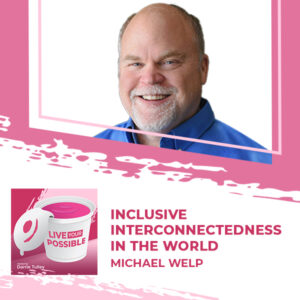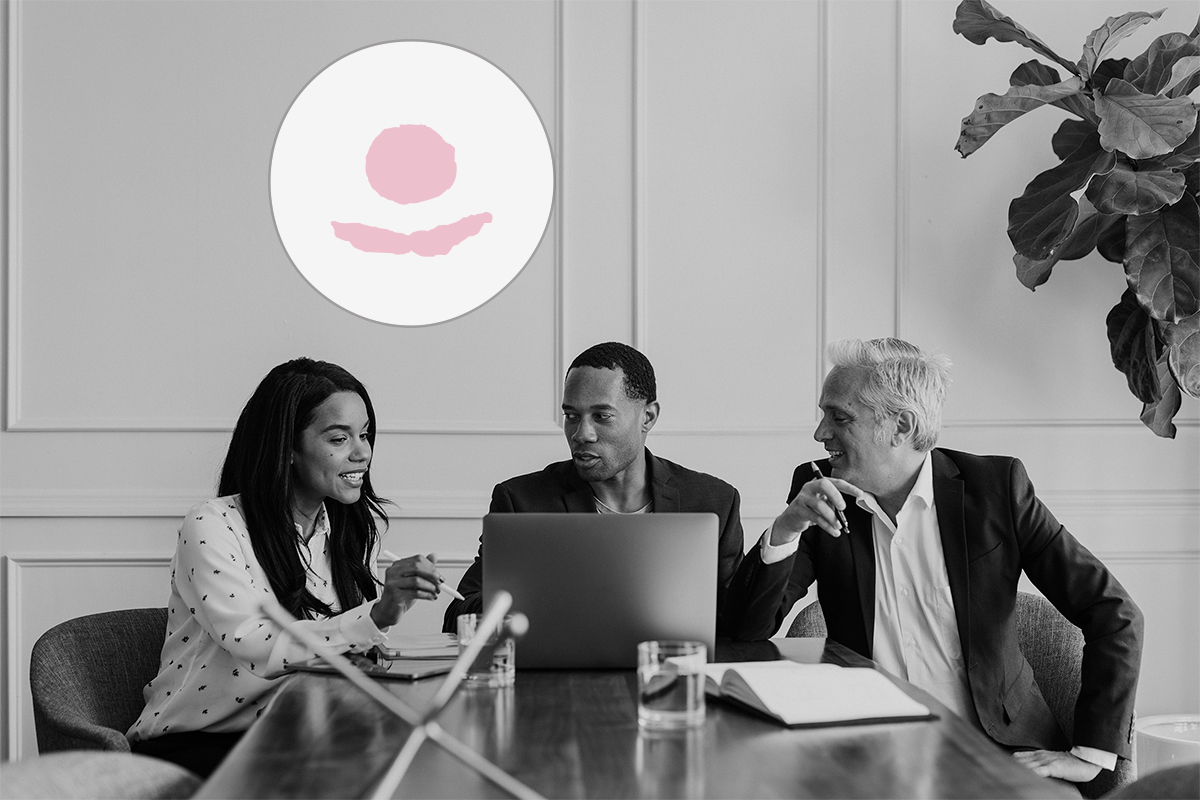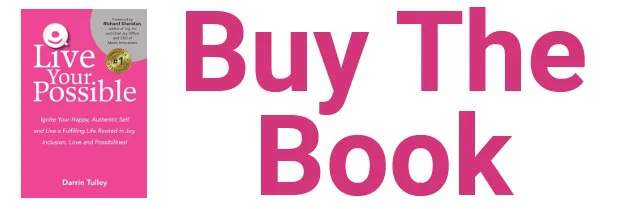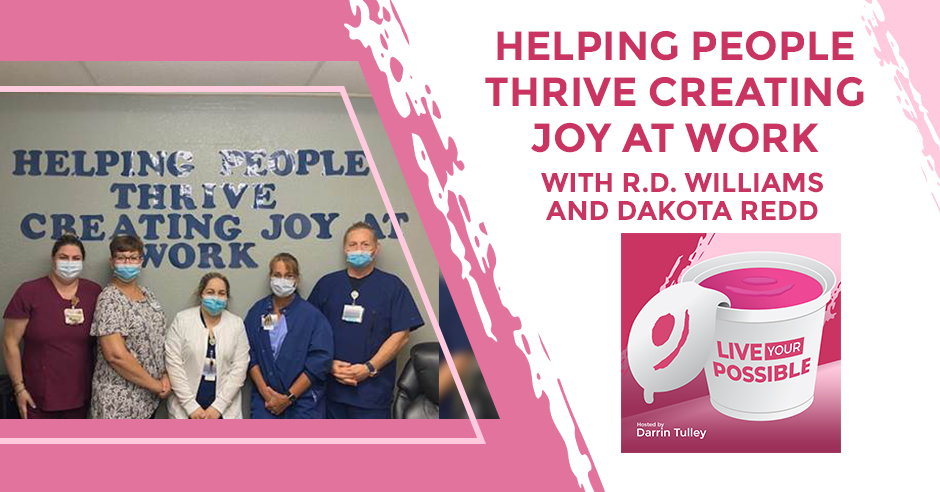
In the healthcare industry, burnout rates exceed 60%, turnover rates are above 25%, and inconsistent patient safety scores are troubling and negatively impacting engagement, community trust, and strain on the financials. In addition, retention has become more critical than ever because of an already concerning trend in nursing shortages. Because of these troubling trends, Darrin’s guests made an intentional change in the medical industry that dramatically impacted quite the turnaround. R.D. Williams and Dakota Redd, the Chief Executive Officer and Chief Nursing Officer of Hendry Regional Medical Center, dive into helping people thrive, creating joy at work. The medical center’s success is when we focus on patient experience and employee engagement. Dakota sees that people like growing when they’re happy. Tune in and learn how you can live your best life today by immersing in an organization with a people-first approach.
—
Watch the episode here
Listen to the podcast here
Helping People Thrive Creating Joy At Work With R.D. Williams And Dakota Redd
Our guests are a couple of leaders from the Hendry Regional Medical Center in Clewiston, Florida. Mr. RD Williams is the CEO and Mr. Dakota Redd is the Chief Nursing Officer. Dakota believes focusing on patient experience and employee engagement is the best recipe for success. However, he and Mr. Williams decided to make an intentional change. These leaders flipped the order by instilling preventive and genuine care for people first with the trust that patients would feel improved care. A new tagline also emerged to help people thrive by creating joy at work that was genuine in a straightforward way to make an impact together.
Not only did patient safety improve, the actions also got people excited to come to work. In this show, we will dive into how this healthcare organization courageously deployed a people-first approach to unlock quite the turnaround positively impacting everyone in the equation to improve patient safety and enjoy work. Sit back and enjoy the show.
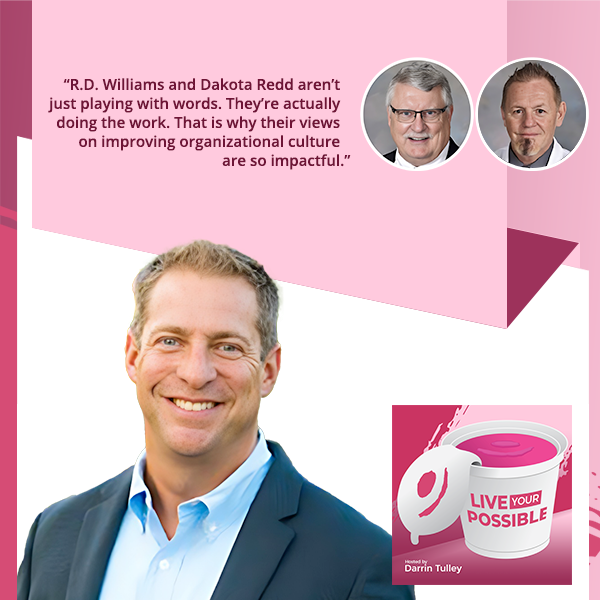
Welcome, Mr. Williams and Dakota Redd. How are you guys doing? I’m excited to have you on the show and talk about your journey at Hendry Regional Medical Center. What an amazing turnaround. You’re getting many accolades out there in the Florida Hospital Association. You’re being recognized amongst your peers and colleagues. I can’t wait to dive into that to know what you all are doing.
We are glad to be here.
Let’s jump in. Let’s talk about what went on with the turnaround. What were some of the challenges that were occurring? We’ve seen many things happen over the last several years. I want to say thank you to everybody in the medical industry and all the associations and hospitals for everything you’re doing out there to keep us safe, especially through the pandemic, the tough times, and everything we’ve been going through. Thank you both and everybody that’s helping us to live our possible, live our best lives, and live healthy lives. What are some of the challenges that you guys have had to endure before you guys made your turnaround?
We were in the throes of the COVID pandemic. Our first COVID patient was in early March 2020. We very quickly started seeing a lot of patients and experiencing a great deal of turnover within our workforce as folks were taking advantage of the travel nurse phenomenon of double your money and still sleeping at home every night. It was a real challenge.
At the same time, what we had been doing for years, was a very traditional structure and culture here. It wasn’t working anymore as far as empowering our employees to be successful and to want to come back the next day to do it again. We started out and made a significant change within the leadership structure of the organization, and then very shortly thereafter started on a journey to not just try but implement a change in our organization where employees can thrive. Even in the middle of a pandemic, find joy in the work that they’re doing.
In healthcare, it’s more than a job. It’s something that you commit your life to. If you’re going to commit your life to something, you ought to get some joy out of it. Dakota came into that new leadership position and said, “I want to try something. Can we do this?” Mr. Williams said, “Sure. We got to do something.” That’s where it’s grown from there.
It’s very interesting. When I first took the chair over back in early 2021, I didn’t want to make a lot of significant changes. I came in as an interim and I had been in C-Suite before and wasn’t sure how I wanted to go forward with that, but I wanted to keep things simple. I started out with that thought process. I knew the organization and some of its struggles so I wanted to keep things simple.
After being a couple of months in the CNO position, I thought more was needed and not because of the pandemic, although that certainly overshadowed everything that we did. In spite of the pandemic, things needed to change. We needed to do something different and go in a different direction. That’s what led me to go down that path. I met with Mr. Williams and said, “These are very difficult journeys. Put that out there for everybody to hear. There is nothing easy about going down the path of changing culture. Everybody knows when you got a bad one, as soon as you walk into the building, but nobody knows how to go about doing anything about it.” That’s the journey we started.
There is nothing easy about going down the path of changing culture. Share on XThat’s incredible in particular around your courage to go down this path, do it together, voice your idea with Mr. Williams, be accepting of that, recognize the need for change and your willingness to go down that path, to be vulnerable, and listen to what your gut’s telling you. I’m sure this isn’t probably the first time you’ve seen the need and the change for culture. It seemed to be a little bit more pressing with the pandemic. The strain and burnouts we know in the industry are pretty high.
The burnout rates are pretty high. The retention rates of nurses and staff are getting too high or people are turning over. It was something like 27% or 28% of folks are turning over in general in the industry, which is super impactful in a negative way to patient care and experiences. I’m sure it’s costly to replace and to also retrain and get people to be aligned again.
I was on a webinar for the state and they’ve put together a work group on the projected nursing shortage for the state of Florida. It’s quite significant I have to share with you. When they discuss this, they’re looking at, “How do we increase people getting into the profession?” What struck me when we first started this journey here was this one question I couldn’t answer.
As a CNO, one of the things that I normally did, I would interview nurses and I’d say, “Why’d you get into nursing?” There was always a very personal connection, something very specific that led them to nursing. It’s always been a very intimate connection. The question I couldn’t answer is, “Why are you leaving nursing in such numbers?” People say, “There’s burnout.” “Why is there such burnout in the industry? Are we addressing that?”
When I took the nursing leadership aside and I said to them, quite honestly, it wasn’t like they came running into the gate to go through this change. For my first meeting, I set up a mock movie theater, showed them some videos, and said, “If I can increase your level of happiness and personal profession, a little bit, I think it would make such a huge change to the organization. What I’m hoping is that people will see that we not only think and act differently but treat each other differently. They’ll want that as part of what is going on. I don’t have a lot of great expectations from this, but let’s give it a shot.” I got a lot of cross-eyed looks. It’s not a journey for the fainthearted.
I love how you both have mentioned joy, happiness and the word thrive and connection. How did these words come about? Are these words you chose or are these the words from your teams? How did you choose to get into that place?
They came in organically. Every good movement or event has to have a slogan. It’s Marketing 101. You got to have that catch. THRIVE came from that. The idea of trust, honesty, open and honest communication, respect, inclusiveness, vulnerability and expectations, and accountability make up that THRIVE slogan. If you’re wanting to make that impact in the culture, tie back into having people thrive within the workplace, put joy, and find joy back in work again.

Joy was just joy. We spend a lot of time at work and there are all kinds of slogans about joy, “If you enjoy what you’re doing, you don’t have a job.” Healthcare is a profession, an advocation, and a life. I’ve been around it all my life, but being in healthcare, you’ve got to find joy in what you’re doing and helping other people.
How did the THRIVE end up being a part of your way of working? I love the acronym. It’s a way of working and a group of values. Many companies and organizations have values and they’re posted up on a website or wall, yet don’t live them. How did you bring these to life?
First of all, little more history on how THRIVE came about. I was at one of our monthly nursing leadership meetings. We were talking about the changes that had already started to happen in the environment. We started talking about thriving and what that meant to nursing because it’s generally a good thing. Babies thrive, that’s a good thing. When the elderly thrive, that’s a good thing. That’s where this seed was planted for THRIVE.
The meaning behind it started to evolve quite naturally. All those elements put together have helped to create a very different environment nowadays in our hospital. This is very important to note, and I’m sure we’ll get into this a little more, but the area of vulnerability is what I was worried about. Mr. Williams can speak to this because I brought it up very initially in our conversations about changing culture. If there was any slip in quality, an uptick in turnover, or a drop off on a best practice, anything like that would’ve occurred during the early unveiling of this new culture, guess what would’ve been attacked? It would’ve been the culture.
Things like, you’re being too nice. You’re focusing on the wrong aspects, the people, and not the patients. What for us was very validating was when we started getting results that were like, “That’s not happening. This is great news. This validates that what we’re doing is worth the effort.” I dare say that most people that you’ll talk to in the medical industry say, “It’s about patient care.” Where we’ve pivoted from that, not taking away from the fact that it’s about the patient care because it’s absolutely about the patient care. It’s focusing on the people who do the patient care. If you create joy there, the rest comes naturally.
Embracing what you try to create is essential. Live what you try to create. Share on XI love the flow of that, moving the flow of where you’re putting the preventive care first with your people, getting people on board so they feel joy and more inclined to provide that level of care that’s needed for the patients. I love the flip and it’s an end. You’re not taking away from the need for patient experiences, safety, and everything that you set out to do. It’s making sure that the people are feeling pretty excited and part of something bigger.
That’s the value of it because you do make people feel good about what they do and then that validates it to them. I loved what Studer did for the patient experience, but he brought in a lot of processes. He said, “If you do this, service will change.” That’s a good thing, but it missed the mark because instead of scripting the people to do that, if you validate what you’re trying to accomplish is good by focusing on the staff and giving them the tools to do their job, respecting what they do, understanding what they do, listening to them, including them using inclusion, all those elements create that experience Studer talked about.
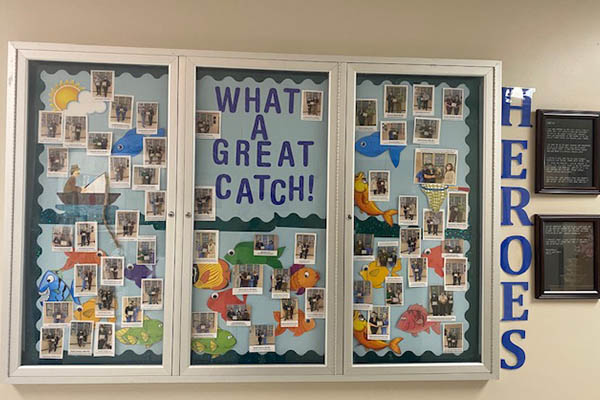
When you talk about inclusion in the way you did, how did you do that? What are some examples?
I’ll let Mr. Williams talk about it from an organizational standpoint, how we’ve included what we’re doing here culture-wise.
We’ve tried to celebrate more and recognize the accomplishments of individuals more and include them in the story that we’re telling about and the positive aspects of our organization. It’s a good catch” that avoided patient accidents or incidents. You hit them off before they occur. We encourage folks to tell us, “I caught this error before it reached the patient.” That’s a good catch. We celebrate that each month and we’ve got a big bulletin board with all the pictures of folks that have submitted.
We don’t have all 96 people up there, but we’ve got pictures of folks that have turned in those good catches and we continue to do that. That helps us provide a safer environment for our patients. We’ve included the folks that are doing the work in making that improvement. Maybe it’s on Valentine’s Day, making sure everybody’s got a nice ice cream sundae to enjoy coming here and being at work, but trying to be sure that the folks that are doing the work are included in how we do the work. That’s a lean thing, but it works with this culture too.
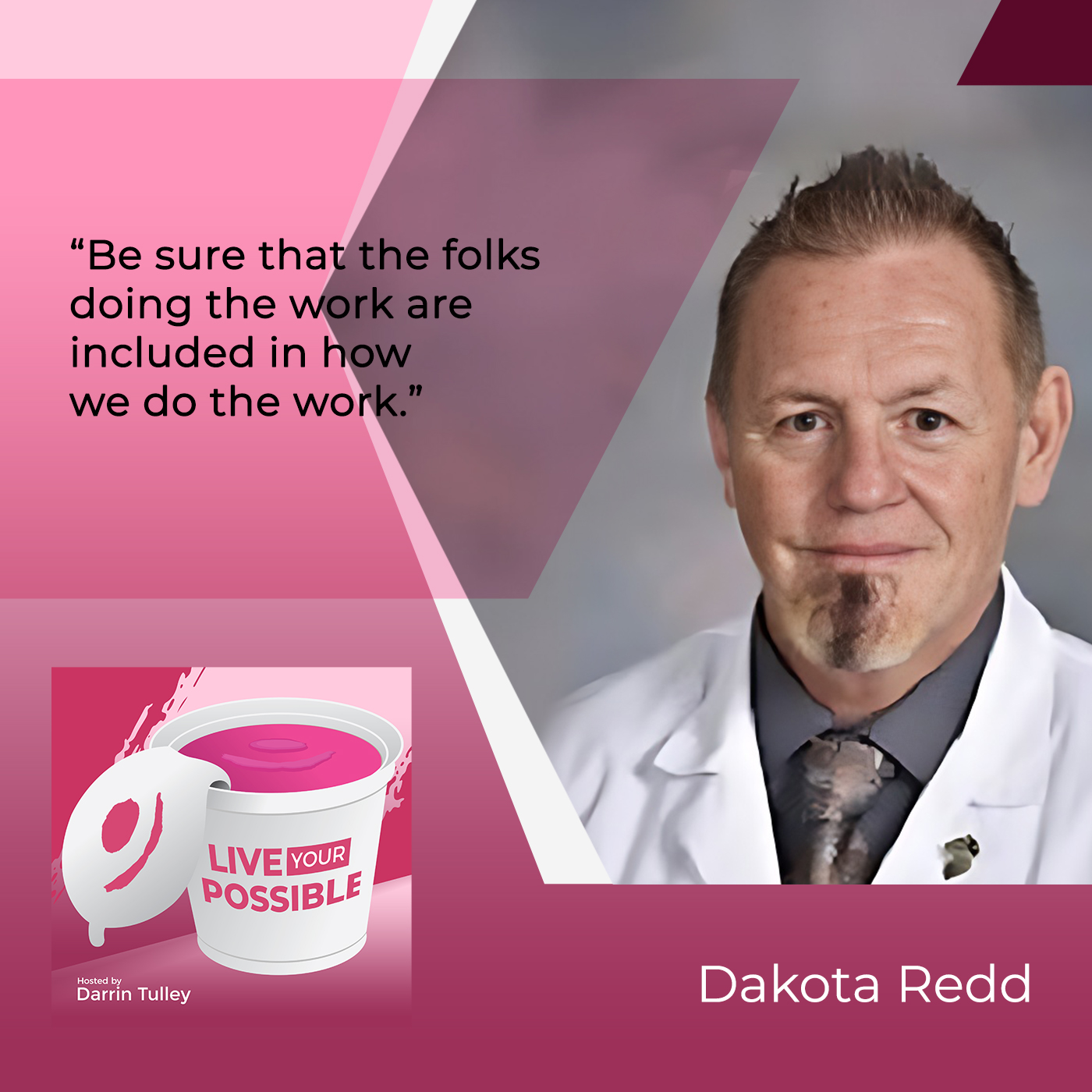
The other thing I’ll add to inclusion, and I was sharing this with Mr. Williams earlier. Inclusion increases innovation. We, like all hospitals, have a campaign against falls. We don’t want patients to fall. Falls with injury not only cost the organization, but mortality and morbidity increase because of falls. We’ve been very focused on creating a zero-fall environment. The traditional way that this is addressed is like this.
We go to the nursing staff and say, “We have a problem with falls. Falls cause injuries. We don’t want harm coming to the patients. It costs the organization.” It’s all that negative stuff that happens related to falls that is very concerning. It is a real concern. I was meeting with a couple of people who are chairing the fall committee and I said, “What if we bring something fun to it?” Right away, a member who was not a long-lasting member of the committee said, “I was thinking about why don’t we talk about falls that were funny that we’ve had and gin up the enthusiasm around the fall program that we had?”
I said, “That’s it. That’s innovation. This is going to be fun.” I immediately told about a fall that I had of myself that I was embarrassed about. That’s innovation and innovation because of inclusion. That idea probably wouldn’t have been entertained at any serious level related to falls. They’re going to have a donut cart going around with donuts and coffee. They’re going to talk about it focusing on falls but through a different filter.

You made it safe for folks that want to share that, which then makes it safer for patients. The flow of people first makes it safer for everybody involved and people are willing to be vulnerable about something you might have been embarrassed about yet there’s a learning for yourself and other folks that folks probably grew from it even though maybe it was hard yet. At the end of the day, you’re better off for it to learn from it and there’s some joy to laugh about it and to make it fun. I applaud that. That’s great.
That’s a staff member’s idea. It wasn’t something that came out of Dakota’s mind. A lot of things do, but not this time.
You’re right about that element of inclusion drives new ideas, innovation, and discoveries. We’ve talked before about asking folks to participate or get involved or to problem-solve things. The best people that have the answers are the folks that are working with us every day that are closest to it. I appreciate that level of willingness and courage to ask folks to get involved because that’s not how we’re always taught as leaders or as managers. We’re supposed to have the answers yet when we get the team engaged and do it with joy. Look what’s happening. I’d love to know some of the results. What are some of the results you are seeing and what are some of the things that have turned around as a result?
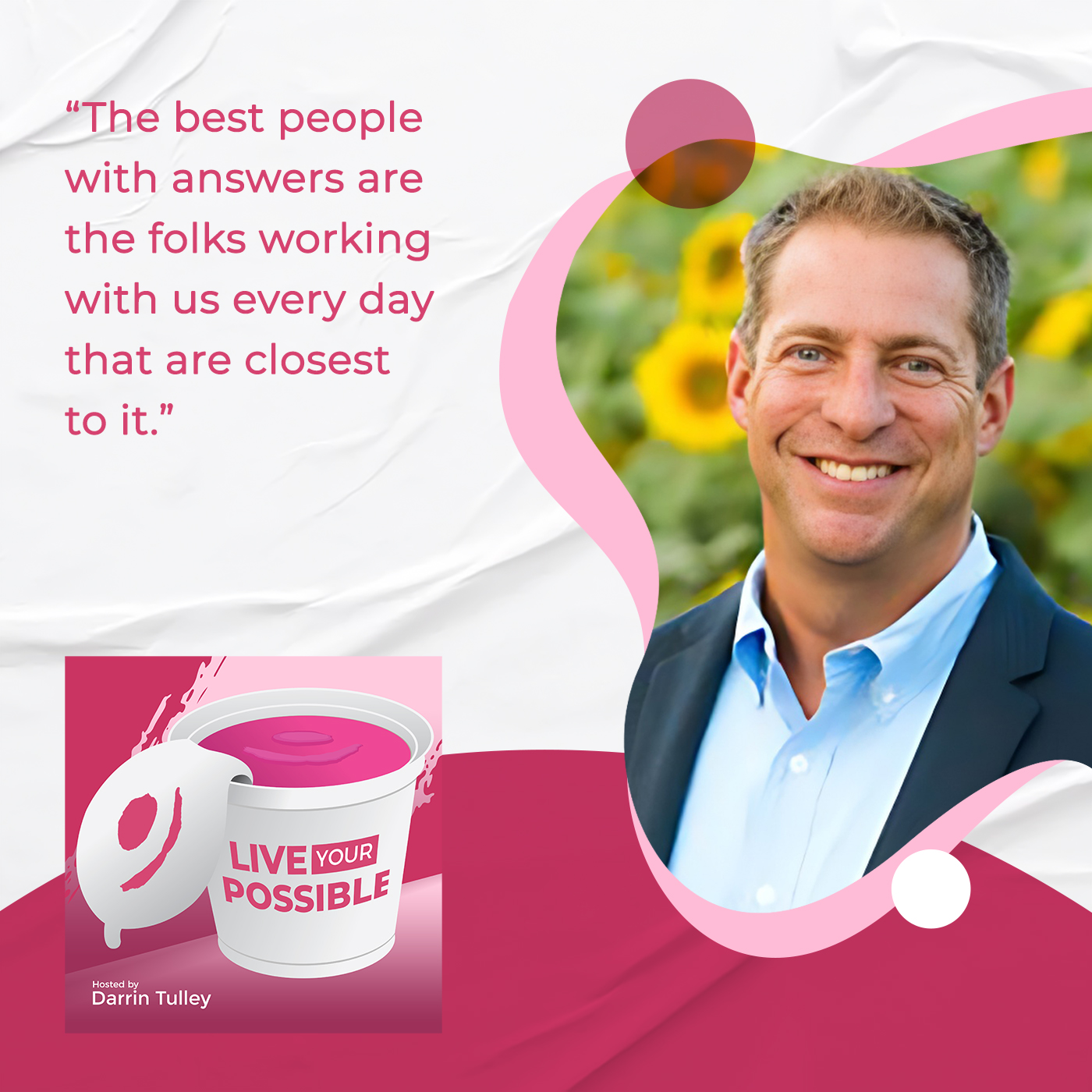
One of the more significant improvements that we’ve seen is the turnover rate in the nursing workforce. We’ve improved from 30% plus turnover to a single digit. Being able to retain the workforce and talent that we’ve brought in, we hire differently. We hire now with a lens of how folks are going to fit into the culture, not just the license and the warm body that we need to fill a regulatory hole. We think about how folks are going to be able to get along and contribute within a team and the culture that we have. One of the more significant things is the turnover.
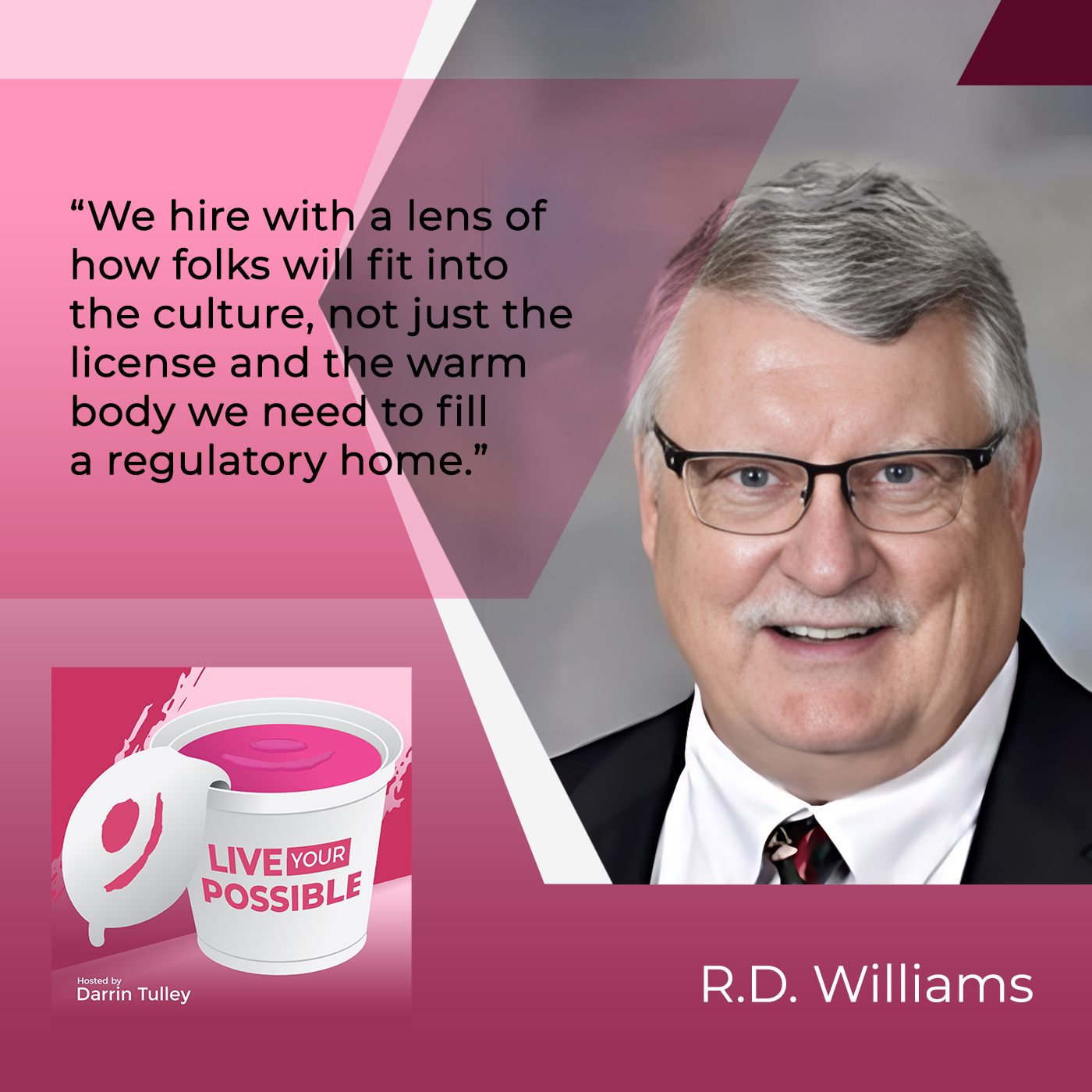
We continue to do very well with our quality metrics. We’re denominator impaired. We don’t have large volumes of anything. Many of the national reporting excludes us because we don’t have enough cases of anything to be reported on the national databases. We continue to look at all of the metrics with regard to, “Are we doing all the best practices to make sure that the patients are safe? Are we communicating the way we’re supposed to when patients are transferred or when there are transitions of care?” We’ve continued to do very well in those areas. Those are some of the wins that we’ve seen.
One of the first things that validated that we had something very special here was we administered the patient safety survey. That’s an AHRQ format that we surveyed both the clinics and the hospital, the clinical environments for patient safety. We tried to use all the thrive that we could. We went into departments. We were innovative. The patient safety officer at the time had QR codes on top of cupcakes that they could scan right into the survey. We had the QR codes on the floor. When you clocked in, you could scan right into the survey.
We went in and met with people. We said, “We know that sometimes surveys are frowned on, but we need this feedback. We need to know how you feel about safety here. Here’s our promise. We’re going to continue to do things to make this a safer environment to focus on what you do, give you the tools to do what you need to do, and hold fast to that.”
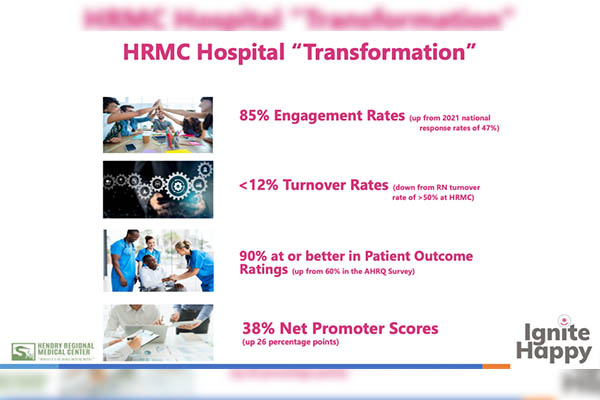
In 2021, the response rate on average for hospitals was about 41%. Our hospital response rate was 85%. There were a couple of very significant shifts that you could only point to culture. When we have seen that, it was like, “This means something to them. This is the right direction.” That’s not to say there aren’t mistakes made.
I keep my average at one a day. We’re proud of that. What we have suggested to this hospital culture is that our goal is not to be perfect. Perfect is an illusion. In some cases, it becomes delusional and that’s counterproductive. We want to be better today than we were yesterday. That’s a long-term goal. It’s not a four-quarter goal. It’s not a goal for quarter one.
It’s a growth mindset, willing to look at what we could get better at and continuously improve and ask the team to participate. All the things that you’re talking about are coming through in this example. The cupcakes are fun. I’m hungry now and you’re talking about these cupcakes. I want to see one of these QR codes. It’s innovative and fun. You got people involved. It’s important to recognize that you’re asking people. You want to hear from them.
You’re being genuine and authentic. You care. You’re out there handing out cupcakes, you’re sharing, “We do we want to hear from you. We want you involved. We want to hear your voice. We want you to be included in our change or cultural transformation.” You’re backing everything you’re doing up. Not saying you want to do it. You’re doing it through the action of your work in the collective work of your team. It’s incredible.
One of the things that we did when we took the information back to the staff is we had our first ice cream social, which by far is the most successful event. Everybody loves being able to make their own banana splits and ice cream sundaes.
This workforce responds well to ice cream.
We had the information there. We talked about it with them. We even went to the night shift and shared with them what our plans were. What we have seen from the survey that was doing well and we’re going to continue that. What they validated for us was successful and where we had an opportunity to be better and we were going to continue that. It’s been a big mover. That was the information and the analytics we needed to validate that this was something that could be successful in healthcare.
It’s working. There’s a tagline you created to pull all this together. What was that tagline?
“Helping people thrive, creating joy at work.” I have to share with you that I first came across that in your book Live Your Possible. We can talk a little bit about how we got into that and the book clubs. It identified what we were trying to do. I have it in big letters on my wall. I tell people this all the time. When I open my door and come around every morning, it’s the first thing I see. When I close my door at night, it’s the last thing I see to remember why I’m here. As a leader, it’s about the people I lead.
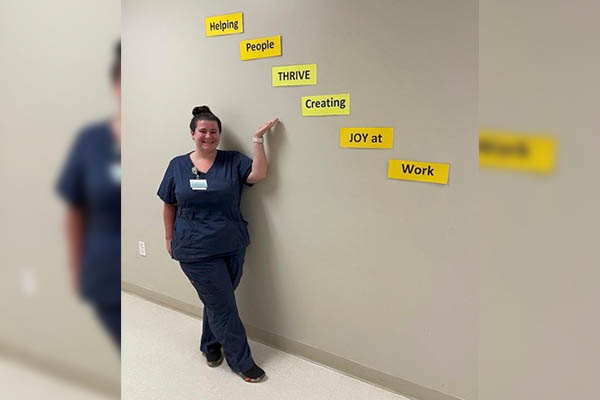
It’s a good reminder. We need to have those reminders that connect with why are we here. What’s the purpose? What’s the bigger need? I love how you all have changed to people first, incorporating joy. There’s a lot of research around that as far as joy in the workplace. The productivity increases a ton of research. Twenty percent is the number that comes to mind that I’ve seen.
You’re building that level of trust around the organization, engaging different folks, and showing empathy, which as you both know, it’s helping people want to be there and you’re attracting different talents. I love the fact that your turnover rates have improved. It is cut in half. It sounds like if you’re going to have nursing shortages in Florida or around the country, it’s important to keep your people.
Especially in small rural hospitals where it’s very hard sometimes to get people to come. We’ve been very successful, both the homegrown and people driving in that want to be part of it. It goes back to people like who they’re working with. They’ll take a little less here and different insurance plans here, but they’ll take that because they do like who they’re working with and they believe in what their work’s doing.
I would do the same. I wouldn’t want to be unhappy at work. I want to have more joy than stress. There’s always going to be some stress and there are going to be mistakes to learn from. Nothing’s perfect. However, I’ve seen research where some people are saying, “I’ll deal with the toxic environment if you pay me 40% more.” That’s like the industry average. Who wants to do that? What hospital can afford that first of all? Who would want to accept a 40% increase for being miserable? Not me. How about you?
I have to share one other story with you. It goes back to that going down this journey creates very positive effects from the business standpoint of things. We eclipsed our one-day volume in the ED. Historically, we’ve seen a record 79 patients in one day or in a 24-hour period in our tiny ED. Instead of the staff being overwhelmed and critical because they didn’t have this and that, they celebrated and applauded the physicians and the nurses in the ED at the time when we said we confirmed that it was a record day. To say that is the opposite of what would’ve occurred years ago in that same ED is an understatement. They were clapping. They were proud that they have seen 79 patients. There’s the win. For those business people out there, there’s the win. People like growing when they’re happy and joyful.

They’re part of something pretty special. It’s a testament to the work you’re doing and to your point around any business or healthcare organization, hospital, it’s possible. You are creating more joy. What you said is your tagline without saying it, “Helping people thrive, creating joy at work.” People stepped up to this monumental task and found joy in that and grew from it, which is phenomenal. You mentioned the book clubs.
Help people thrive by creating joy at work. Share on XI’d love to know about the book clubs. I appreciate you making the comments about my book. it’s been such an honor working with you and being even part of one of those book clubs. It was such a special treat to be involved and on a call with you guys. It’s been an honor to be working with you on this. I’d love to know more about the book clubs, and how they came about. How are they working nowadays? How did you involve people?
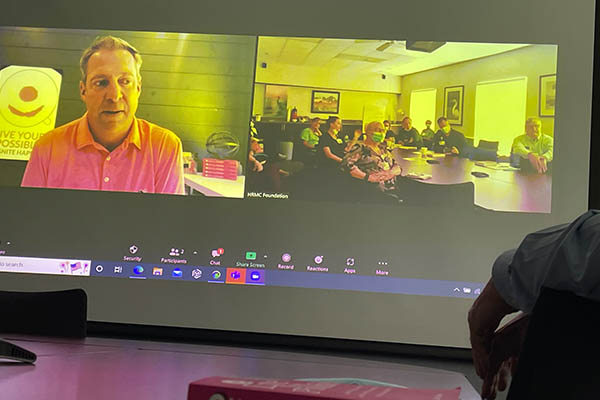
Dakota started the book club idea with his nursing leadership group as they went through Shawn Achor’s book, The Happiness Advantage. One of our compatriots in the senior leadership team, David Theroux, brought your book in. He had a personal connection through his family to you. David is on board with the cultural change and he said, “This guy might have something that we can work with.” Dakota and I talked about it. He said, “How can we do this? How can we get people out to look at this and can we do it in a book club format?” Dakota facilitated the first book club and we had 8 or 10 people in it. It was voluntary, you want to learn something. We bought copies of the book and handed it out.
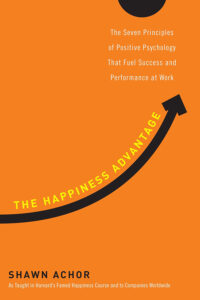
Week to week, we talked about what we were reading in the book, the examples, and what we learned. That grew, then there was a second group of people that wanted to be involved in the book club. There was a second book club that got started and someone else facilitated it. While we finished with your book in the original group and, “Let’s get another book.”
We started reading another book, expanding on thematically still the same information that how can we refocus our energies on supporting our employees. That supports the work that we’re doing within the organization. It’s continued on. Dakota’s put together a roadshow that we’re going to do here in the near future for the folks that haven’t had the opportunity to be in a book club but want to get on board with the cultural change and try to give them some foundational work for how we’ve come to this place and move on from there.
Congratulations. Bestselling author. We’re very proud of you.
I love the post that you shared on Facebook. The pictures will show the audience too. That was fabulous.
We have a best-selling author as a member of our book club here. When I first started this journey with nursing leadership, Mr. Williams referenced Shawn’s book The Happiness Advantage. I found that to be foundational. One of the things I worried about was I wanted to be able to validate what I was saying about mindsets through research.
That seemed to be the best vehicle that I knew of at the time. We went through that book over seven months and the changes started being significant. It was at that time that there was a little gap and I became worried about losing momentum. David Theroux, our COO walked into my office and said, “I’ve got a book for you that you’re going to love.” He plopped your book down.
I read the opening and I went, “This is it.” Shawn’s book became foundational for us. Your work was transformational. That helped us to go to the next level with this. I will add the caveat that we’ve never made any of this mandatory even as we’re speaking. This has all been quite natural and to some people’s discomfort because our goal was to allow this to evolve naturally without putting a lot of have-tos to it.
We didn’t want to make a programmatic structure to it. People needed to get on board because they saw the benefit of it and how it helps them and others.

As I was reading your book, I came across the idea of using it as a book club book. That’s what started it. David didn’t make it back to his office before. I said, “How can I order a stack of these books?”
Happiness can be a platform for change. Many folks snark at it. Happiness is something that we can live with every day and we’ve been taught that it’s temporary. It’s a buzz and it goes away. We can make that part of every day. That’s something that I woke up to when I saw and read the work with Shawn Achor. It’s incredible and I appreciate you saying those nice words about the transformational components of my book Live Your Possible. What I love about what you said is about how it’s organic and natural. It’s not just taking elements out of a book and going to apply it as it is. It’s making it your own.
Making it how it’s going to fit best for you all and how people want to embrace it because that’s how this works. It needs to be personal and be aligned to a greater being back to your theme of helping people thrive and creating joy at work. It needs to be what you are as a collector group. That’s what you did. In my opinion, that’s why it worked and you did it all authentically. You both stepped in as leaders. David stepped in as a leader and you guys walked to talk or you say, “Go do this program. Go do the book club. You were part of it.” You believed in it. Other people believed in it. We need to be accepting that we can be ready when they want to come back.
We don’t fault them. We don’t judge them. We are ready for when they’re willing to have joy in their life. That’s the way I think about it. One of the things around the acronym THRIVE. I have to bring this up around the first letter being the T about Trust. I think in the absence of trust, not much gets done. That’s critical and I love that it’s first in the acronym.
I also love the work you’re doing to make it safe and build trust and credibility. Are there some other things you might have done to lead or kick off meetings or do different things that might have built trust within your organization to say, “I’m here to walk the talk too and I’m not just asking you all to do the work?”
One of the things that we did was to advocate thank you notes and use authentic language in thank you notes to establish trust. There is an element of us and them that exists in every organization. If you want to test your environment, the louder the us and them grow, the greater the problem you have. That’s how T and TRUST began the acronym because it’s not about us. It’s about US as an organization.
We’ve seen it in meetings, we’ve seen it in how people threw people under the bus, incivility, sometimes targeting. All those things are validation that you don’t trust each other. One of the other most important and overlooked words in our acronym is vulnerability because if you don’t get a level of vulnerability, you’ll never get trust. You’ll never have trust without vulnerability.
I did a fun thing at the book club. In one of the first book club meetings I had, I started talking about vulnerability. Immediately the two C-Suite members dropped their heads to the table. This is a nursing thing. We’re talking about vulnerability. That means weakness. This is where Dr. Brené Brown did some great work in her research on vulnerability. Vulnerability is a cornerstone to trust. I trust you enough to be vulnerable. I tell you my story and I know that I can trust you that you won’t be doing anything to show me any harm. While I think trust is imperative and that’s why it’s the head of the acronym, without vulnerability, you’ll never get there.
Mr. Williams, I believe you might have kicked off a meeting with vulnerability talking about thankfulness. I’d love to know what occurred through that. I heard a story in the past about that.
I took that from some work that some of the nursing leaders were doing as they were doing their daily huddles, talking about having their employees if they chose to say something that they were thankful for. We have been talking about the importance of thank you notes and being honest about being thankful for things that people had done for us.
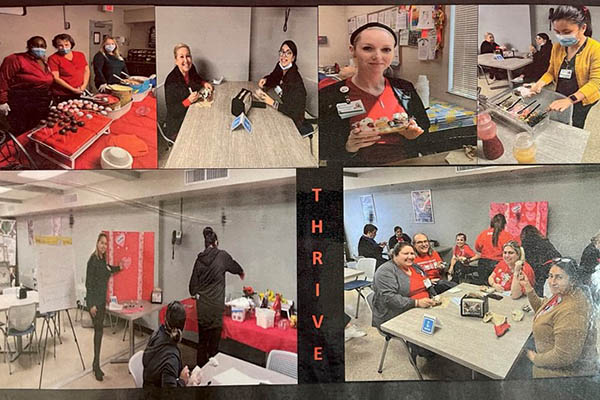
I kicked off. We have a monthly department managers meeting. We’ve started kicking that off now by going around the table and asking folks to share what kind of thank you notes or why did they send out thank you notes this month. Share with folks what’s happened that makes you thankful for what’s happening here at work and how you shared that with the folks that brought that joy to you in this job.
The first time around everybody’s kind of fumbling around trying to talk about, “The sky’s blue,” and those types of things. By the second time around, folks were relating some great stories about how XYZ had occurred and how this person had helped them in a time when they needed help or they unexpectedly came up with a show of gratitude or respect. They were thankful for it. They started sharing that. We’ve continued that in our monthly meetings. It’s great as the folks have grown into this and put some thought into what they want to share.
One of those shares, because I think Mr. Williams is a little modest, is Beatrice, our material support service support services director said, “Thank you for making me want to come back to work. You put the fun in coming back to work.” I sat there. For me, it’s a seminal moment. I’m going, “That’s it.” Remember my original question is, “Why do people want to get out of this business? How do you get them to want to come back to this business?” She’s saying it. “I wake up in the morning and I want to come to work.”
She has a gratitude jar now that she puts money into for expressions of gratitude
On daily huddles, she pulls something out of there that’s to be grateful for. It is a gratitude statement. It’s amazing. That connects the dots that him taking the lead on that and you know this yourself. In any organization that attempts to do something like this, if it’s not from the top down and the middle out, it’ll never get through your organization.
That’s it. It’s perfect. Hopefully, you both are feeling the warmth of that yourselves. I find it a beautiful story you’re right to have to buy in at all levels and to invite people to be part of participating and contributing for her to feel like she’s excited to come to work again. That is it.
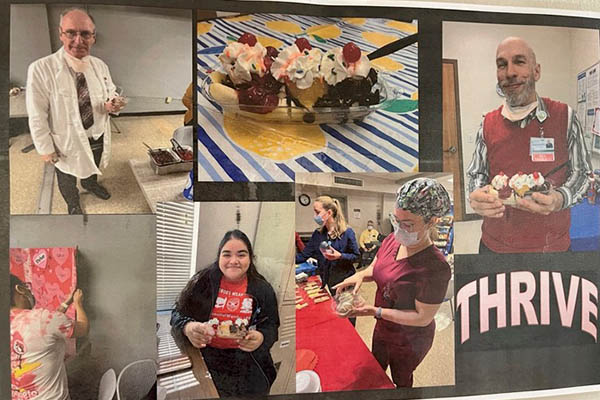
You’re not asking for other people to do things that you’re not willing to do yourselves. It’s phenomenal. It’s an amazing story. You’re paying it forward, not only with your people because patients are all safer. The risk levels are better. You are in the top quartile in a lot of categories based on the survey you mentioned. I also know that it’s helping out your people in the sense that people are going home happier. Guess what that’s doing to their families!
I also know it’s having a greater impact on the community, not only through their families but also on the people that are being cared for as patients, probably with speedier recoveries. It’s harder to measure but I would imagine since you all have such a brighter light. People are going to be more thoughtful, more hopeful, and more willing to heal faster. I’m sure that’s hard to prove, but yet my gut tells me that’s happening. Tell me what’s going on in the community. Are people recognizing this in the community? Are you guys feeling that? Are you guys hearing positive things?
The board members as we talk about this, you start talking about a culture change in a board meeting, and this is a group of business people who don’t necessarily have any healthcare experience. You start out with eye rolls and tell the stories about retention, quality, and engagement on surveys. They start talking about how that’s relating to their business and how important it is in their business to retain staff and focus on their employees as much or more so than you focus on your customers.
I was at a leadership meeting with one of my board members and he related a story. He says, “You see this Dakota guy? He’s always talking about this touchy-feely stuff. I don’t know how that works in my business, but that’s what every speaker that we’ve had in this leadership conference is talking about.” He’s onto something. That was the revelation that he shared with us.
That’s a good connection for folks to see that right themselves to say, “That’s what’s happening right here in front of us.” It’s amazing and I’m sure folks are feeling this way whenever you’re located in your community and folks are seeing the good and they’re coming into the ED. The team is celebrating the fact that they’re helping individuals at record levels. It’s quite spectacular.
I have two more questions and we’ll wrap up. The first question I’d like to get into is if there are any challenges or life lessons that helped you to work through these last couple of years as far as embracing vulnerability, courage, embracing joy, and thriving. Are there some things that you had to endure, maybe light-up moments, maybe some vulnerable moments in your life that allowed you to shape where you are at? That’s the first question. I don’t know if there’s anything that comes to mind for you.
I’ve been on this journey for a while now. I’ll go back to what the genesis for me was. Why were nurses leaving a profession that they got into it for intimate reasons? My last gig prior to this one was probably as toxic an organization as I’ve worked in. It led to me seeking answers. There have to be answers to these questions. We know the questions and if there isn’t, then maybe we need to create some answers. Maybe that’s where the answer is. That’s what started the journey for me, the opportunity to come back and work with this team. While I knew they had some challenges, I did feel like the components were here to put something together that could be lasting and maybe even very unique.
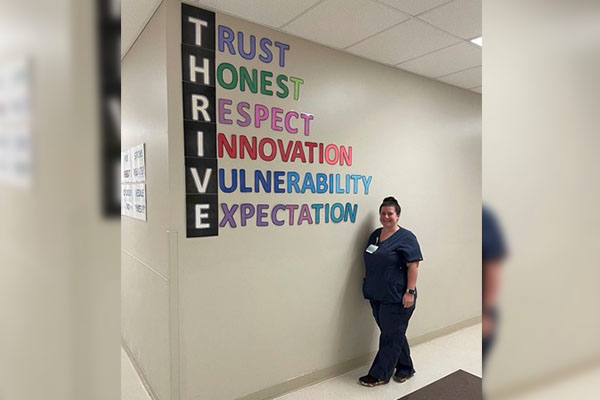
I had no idea it would end up to this degree again. Much of that is in thanks to the gentleman sitting to my left here. I’ve worked with many CEOs. Nobody likes to hear, “You have a toxic environment on your hands.” Nobody is ready to say, “What do we do about it?” He listened to both and asked the right question. That’s what started putting the puzzle together for me. That was the moment. It’s valuable for all of healthcare as an industry.
Kudos, Mr. Williams, for your willingness to listen, accept, and do something about it. It’s about sympathy, empathy, and all the way to action mode.
There was some selfishness to it. This has been my life’s work. I’ve always said that I’ll do this as long as I’m having fun doing it. It was starting to not be fun. I’m on the tail end of this part of my career. It’s turned into a career extender for me.
You’re helping benefit many people and impact them in a positive way. Readers, it’s important to recognize that there can be finding joy in the work we’re doing when we focus on people, on the right things that matter to you and your organizations, the joy that might be there or that could be stoked and let up for the organizations to do their best work. It’s okay to feel a little selfish from that because we’re better. We give. We give back. It’s a two-way road. It’s important.
You guys are paying it forward. You’re making an impact that’s impacting your communities. I do hope all the recognition you’re getting with the Florida Hospital Associations and the presentations you’ve been giving there, people are noticing other healthcare organizations are taking a moment out of their day to slow down, pause, reflect, and start to think about how they can change and make these steps being vulnerable, courageous and making an impact like you all are doing. It’ll make a far-reaching impact in positive ways. As we close up here, I’d love to hear if there are any final comments you’d want to add to other leaders about what they can do to start on their journey.
Think and act courageously because it takes that. It’s not an easy journey to take. People don’t like, “I’m looking in the mirror,” if that’s the first step in a journey and many of these journeys start with, “You need to look in the mirror.”
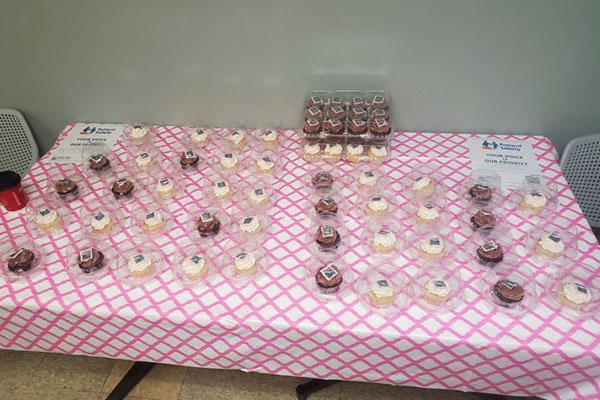
Anything else you would like to add, Mr. Williams?
We’re not out here doing this alone and whether it’s healthcare, any other business, or solo providers, but any business that has employees, you’re not out there being successful on your own. You’ve got to do things that can help your employees, partners, and collaborators be successful also, and be able to focus on them so that the work that you’re doing can be meaningful for more people.

I appreciate everything you’re saying and all the ideas you’ve suggested. What I love the most is that you’re not just saying words. You’re doing the work and you’re calling it fun work. You’re celebrating that with cupcakes, ice cream, and other things. I can’t wait to come down and visit you all because I want to join in on those sundaes or ice cream socials.
I’m honored to be friends and to be working with you all. I admire what you and the team have done and what you’re doing for the community. I’m grateful for what you’re doing and your messages. I hope people will read, self-reflect, and see what they can do or organically in their organization or wherever they are in their community. Thanks for being here. I look forward to reconnecting real soon.
We appreciate it. Thanks a lot.
Thank you.
—
Working with the teams at Hendry Regional Medical Center where its culture and patient experiences are flying high has been an honor changing mindsets and belief in each other, increasing engagement, and creating a happier workplace. It takes commitment from all levels of an organization and patients to see it through.
The team is committed to its people with a shared set of values happiness and trust at the core. The Hendry team provides another use case for other hospitals or any organization to consider trying out. First thing, set out a commitment by the leadership team and engage people to identify the most relevant values and include joy at work as part of the focus. Happier employees are more energized to get involved and studies show they are 20% more productive.
Secondly, be sure to believe and consistently walk the talk. As the Hendry leaders did, as they followed through with their thrive values model. For example, empathy and trust grew, which enhanced engagement and involvement scores to nearly double by over 85%.
Third, include your people in solving problems and encourage them to have fun doing it with the belief they have the untapped potential to accomplish anything. You might be amazed at what happens.
These initial steps will set you on your way in any workplace or community organization looking to help people thrive by creating joy at work with the belief that results like Hendry’s can or will follow. Until next time, take the action steps to live your possible as your happy, authentic self and bring out the best in others all around you.
Important Links
- Hendry Regional Medical Center
- Live Your Possible
- Community of Practice Workshop – HRMC Story
- The Happiness Advantage
- https://www.Ted.com/Talks/Shawn_Achor_The_Happy_Secret_To_Better_Work
About R.D. Williams
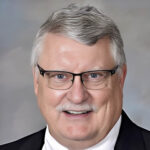 R.D. has served as the Chief Executive Officer of Hendry Regional Medical Center since June 2013. During his time with Hendry Regional significant improvements have been made in financial performance and in all areas of Quality and customer service. R.D. currently serves on the Florida Hospital Association Board of Directors as the rural hospital representative and chairs the Association’s Quality and Patient Safety Committee. R.D. also serves on the American Hospital Association’s Region 4 Policy Board.
R.D. has served as the Chief Executive Officer of Hendry Regional Medical Center since June 2013. During his time with Hendry Regional significant improvements have been made in financial performance and in all areas of Quality and customer service. R.D. currently serves on the Florida Hospital Association Board of Directors as the rural hospital representative and chairs the Association’s Quality and Patient Safety Committee. R.D. also serves on the American Hospital Association’s Region 4 Policy Board.
About Dakota Redd
 Dakota Redd is a Registered Nurse BSN. Currently is the Chief Nursing Officer for Hendry Regional Medical Center in Clewiston Florida and has been in this role at the hospital for just over two years. His healthcare journey started more than forty years ago with eighteen years of critical care nursing focusing on Cardiovascular Nursing.
Dakota Redd is a Registered Nurse BSN. Currently is the Chief Nursing Officer for Hendry Regional Medical Center in Clewiston Florida and has been in this role at the hospital for just over two years. His healthcare journey started more than forty years ago with eighteen years of critical care nursing focusing on Cardiovascular Nursing.
He also has extensive Nursing Leadership experience, that includes prior C-suite roles as (Chief Nurse Executive)/Chief Clinical Officer), and ten years as a Director of Emergency Services. Currently his primary focus has been on Hospital Culture-and helping people to THRIVE at work!


